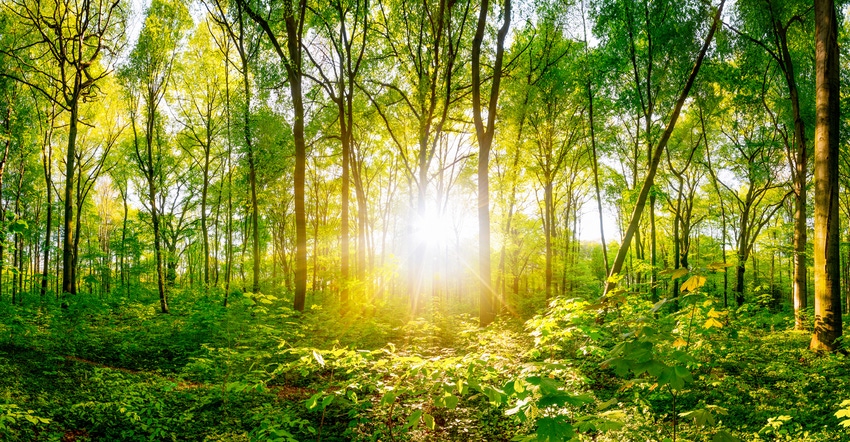May 10, 2019

As summer approaches, you may notice that a lot of evergreens, particularly pines, are looking pretty brown. This appears to be more common in northern Illinois. There are several reasons for this, but let’s focus on the most common causes.
One of the most common reasons for brown needles after winter is physiological drought. This is very similar to summer drought, but it occurs during the winter months. Drought isn’t a problem now, of course, but remember, we had a lot of fluctuating temperatures this past winter, with severe cold (polar vortex) in late January followed by periodic warmups.
Evergreens transpire in winter just like they do in summer, but with the soil water frozen, trees are not able to take up water lost from transpiration. On “warm” days (temperatures in the 40s and 50s degrees F) with wind, needles lose water that cannot be replaced. As a result, they dry out and turn brown.
Coupled with physiological drought is deicing salt damage. If trees are growing along north-south roads, salt spray from the roads may also burn needles. Salt tends to dry out plant tissue and cause needle tip burn. The distance from the road, the amount of salt spray, traffic patterns and prevailing winter winds will determine the severity of the damage.
Another cause of brown needles is periodic needle drop. Unlike deciduous trees, pines shed their interior needles every so many years. Needle drop varies with the pine species and usually involves interior needles, not ones farther out on the branch. It is a routine process for conifers and does not harm the tree.
Disease to blame?
Various needle blights and needle cast diseases can also affect pines. They are common when we have cool, wet springs with lots of rain and high humidity. Diplodia tip blight kills the growing tips and needles, and needle blights cause needle drop.
In the cases of physiological drought, salt damage and periodic needle drop, trees should recover and begin to green up over time. Depending on the weather, this may take some time. Do not rush to judgement. If the new growth is green, then the tree will probably recover. Several pines at the Joliet Junior College horticulture land lab came out of the winter looking brown, but they are starting to green up and recover.
Apply water, if needed, but do not overwater. Remember, pines do not like “wet feet.” So far, we have had lots of rain, so there should be no need to water unless you are on sandy, well-drained soils. As long as we keep getting rain, you can let the plants recover on their own.
Treatment for fungal needle blights and needle cast diseases require fungicide treatments and are usually not warranted. Plus, they must be applied early in spring, before the diseases develop.
Keeping trees healthy by proper watering, fertilization, mulching and pest management will help them recover and thrive.
For more information on proper care of conifers, consult your local county Extension office or professional arborist or forester.
Miller is a horticulture professor at Joliet Junior College in Joliet, Ill., and a senior research scientist in entomology at The Morton Arboretum in Lisle, Ill. Email your tree questions to him at [email protected].
About the Author(s)
You May Also Like




